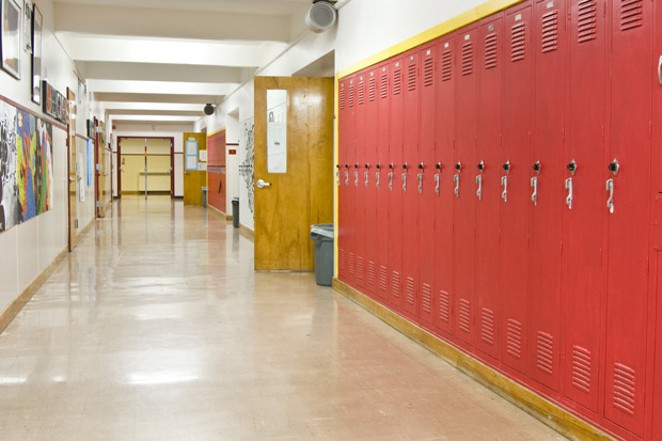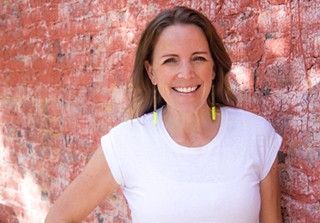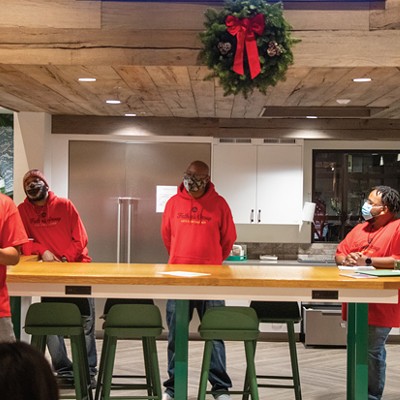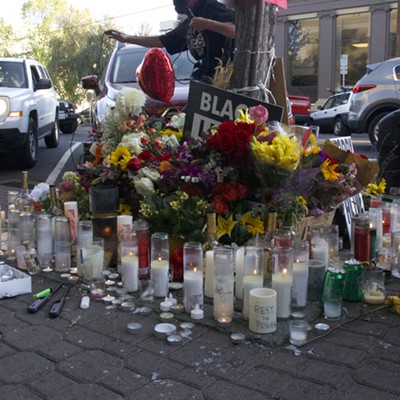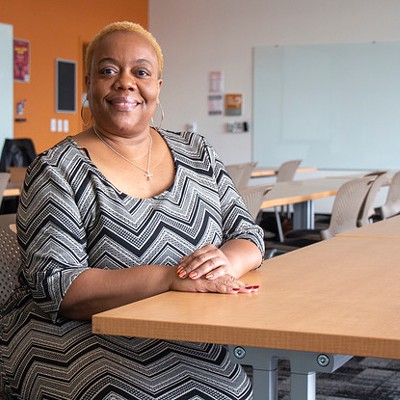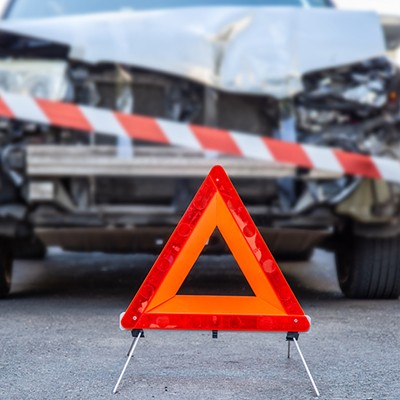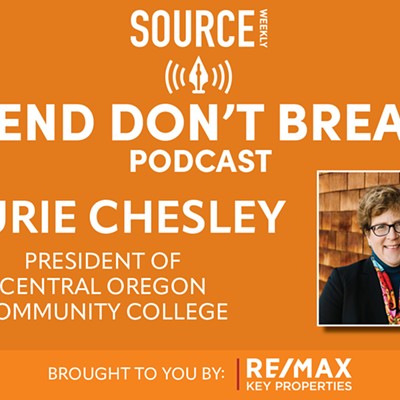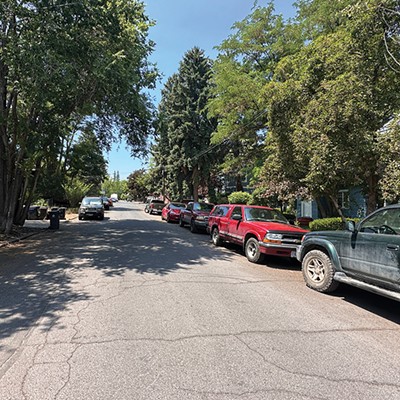During the 2017-18 school year, Bend-La Pine Schools' student population was 82 percent white, according to Oregon Department of Education statistics, making the non-white student population roughly 18 percent. Compare that to the 1997-98 school year, when the district had a "minority population" of 4.3 percent, and it's clear demographics are changing.
With 18,064 students, that means over 3,200 Hispanic/Latinx, Black/African-American, Asian, Native, Pacific Islander and other minority students attended BLPS schools last year.
Some of those students report ongoing racial harassment, comments and bullying, perpetrated by students—and even staff—within the district. Students and their parents say what's adding insult to injury is a lack of direction from school officials about how to handle incidents as they happen.
"Everyone wants to think of Bend as a utopia," said Megan Perkins, parent of two students of color in the district. "And so, all the things that happen at schools, it's like, 'Oh, that's just a one-off, just kind of slip it under the rug, that was just that one kid that said that.'"
Parents organize around students of color
Perkins is among a group of parents who formed an invite-only Facebook group, Embrace Bend, in December. The group, which Perkins reports had more than 175 members as of February, is a forum for parents of students of color to gather, organize and advocate for their kids.
The group formed, Perkins said, because, "all of our kids have been treated differently, sometimes horribly, in the school system—and what can we do about it?"
Perkins presented me with a list of racial slurs reported at local schools, from students opting to leave certain schools for being called the "N" word, to Asian students being called "ching chang," to one student telling a black student to "go work in the fields," to students using the word "beaner" to describe Latinx students.
While Perkins says the list offered was "deliberately vague" because some parents feared retribution, other incidents were more specific. Perkins said her group was especially disturbed by an incident this past Halloween at Mountain View High School, where a student came to school grounds dressed in a manner depicting someone of another race.
Mountain View Principal Michael Hicks confirmed that a student showed up on school grounds after school, saying, "It wasn't a costume, but there was some racial component" to the student's dress.
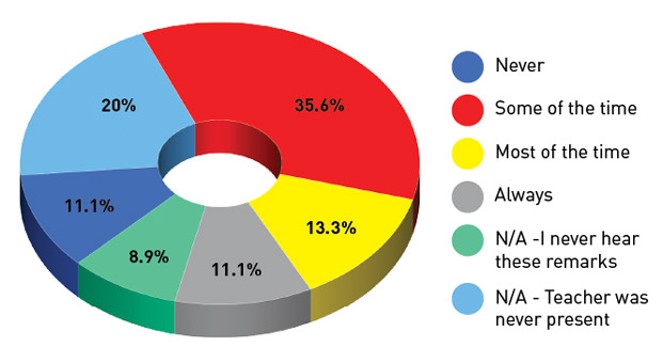
Jim Boen, BLPS' executive director of South County and Middle School Programs—a role that includes oversight of discipline—said, "There was an incident that was investigated and followed through with in terms of some consequences for kids involved."
Perkins and other group members feel that when incidents like that are substantiated, and discipline issued, school officials should do more.
"I would be having a school-wide assembly and saying, 'Let's talk about this, what's going on here and why is that wrong?' And that's not what's happening," Perkins said.
"There's obviously going to be times and places where a school-wide response is appropriate and is necessary, and when or when not to isn't always clear. That's when we have to do our diligence and have conversations and make that determination," Hicks said.
Investigations and discipline
BLPS' Boen underlined the district's policy around discipline, which he said includes an investigation, interviewing witnesses and issuing discipline when warranted. Sometimes, "discipline" involves getting victim and perpetrator together to share how the incident impacted them, in a restorative justice-type circle. Because of privacy laws, Boen said the terms of student discipline won't be shared publicly.
But some students feel having more conversations would help them feel supported.
"In my experience, a teacher has never done anything—which has kind of fostered that anger, feeling like, well, none of the teachers are looking out for you," said one student of color, who shared their story on the condition of anonymity. "It would be better if the teacher did intervene and say something, because it's hard for the person who's being told these things to rationally fight back."
That student detailed ongoing experiences with a teacher at Summit High School, including the teacher saying, "shooting up" a mosque "wasn't so bad," as well as defending the use of the "N" word, since it's used in literature. The student says the teacher was out of school for several days following that last incident, that school officials investigated, and that the teacher came back to school and told the class he felt students had gotten "so worked up" over one word.
"If he had just said, 'I'm sorry, I won't say it,' and moved on, it would have been fine," the student said, "but his whole attitude was so angry and defensive and just, the classroom felt like a very unsafe environment at that moment." Summit Principal Michael McDonald would not comment on the allegations due to privacy laws, but did say. "When we see racism, classism, homophobia, etc. in our schools or community, we take appropriate action and then educate."
And then there are the most serious cases. In December 2017, a black student Deshaun Adderley, took his own life after reporting ongoing bullying at Summit. Adderley's father, Donavan, told the Source last May that he saw his son falling into depression over the bullying.
Asking for guidance
Another BLPS teacher—who asked to remain anonymous—said they want to hear more from district or school officials about how to interrupt incidents of harassment, or how to respond to offhand comments.
"There's no policy in our district around racial bullying or harassment, so I think that principals don't really know how to proceed and how to... (create) expectations and policy around it in the school district." BLPS does have an equity policy, adopted last June, along with a general policy around discrimination and harassment. But this teacher hopes for more direct guidance about what to say to students.
Perkins of Embrace Bend agrees. "We need a policy put in place, district-wide, for when these incidents happen. And it can't just be anti-discrimination; it has to be a proactive... for when these incidents happen."
A call to action from outside the district
Several years ago, a small group called the Restorative Justice and Equity Group approached officials at BLPS with the idea of bringing restorative justice practices to area schools.
According to the not-for-profit member association, Restorative Practices International, restorative justice involves placing focus on the harm done to people and relationships, and then integrating a "way forward" that involves "wrongdoers, victims and the community in efforts to heal the harm and put things right."
"We were concerned about bullying and things that we were picking up in the paper and coming to our attention just by word of mouth, about some students being harassed, and very unhappy students who were black or brown," said Dalton Miller-Jones, a member of the group, who's also a former Portland State University professor of neurodevelopmental psychology and the former chair of PSU's Black Studies department.
"The superintendents were very much in agreement with what we were attempting to achieve in the schools—which was some kind of advocacy, some sort of position in the schools that students could turn to when they were feeling really out of sorts."
Miller-Jones says they brought ideas and presented lists of potential speakers to officials at the district level, and to individual schools—but that district officials didn't take up the group's suggestions.
Today, he believes the election of Donald Trump has made racism even more visable.
In testimony to Congress Feb. 27, the president's former lawyer, Michael Cohen, stated plainly: "Mr. Trump is a racist," sharing anecdotes of racist comments made by the president.
"It's no longer under cover," Miller-Jones said. "It doesn't just leak out. The permission to voice white supremacy has been unleashed, and now we're seeing it. And it doesn't look pretty—but you better look at it, because it's sure there, and it's been there."
In that landscape, "We decided that we couldn't wait for the schools to step up," Miller-Jones said. "The ambient level of stress that these students are under, I don't think can be fully appreciated unless you're a person of color. Latinx students, these days are under unbelievable stress," he said, pointing to the ongoing debate around asylum seekers and migrants at the U.S. border as sources of stress.
"And so, you're going to be aware that the police are looking at you, that other people in the community may have hostility towards you, if they're driving around with MAGA symbols on... They're just synonymous now—the country's leadership is synonymous with anti-Latinx.
"And the tears and the emotion that these kids are burying daily—I think we really need to be cognizant of it. It's going to have impacts around their ability to maintain their health. Miss more school. They get behind in school. It just is a complex web of booby traps—a web of barriers and assaults and insults that, psychologically, is a cost."

While student success can be due to a host of factors, graduation rates are one way educators can measure student outcomes. ODE data shows Hispanic/Latino students in BLPS had an on-time graduation rate of 57 percent last school year. Black/African American students' on-time graduation rate was 54 percent. Among all students, the rate was 79 percent.
Direct support for students of color
While the RJ&E Group has longer-term goals of introducing culturally responsive and inclusive curricula, it's more recently been focused on its first Town Hall, titled "Let's Talk About Race," modeled after events run by the Oregon Education Association in Salem and Eugene, and co-sponsored by the Latino Community Association, the Bend Education Association and Central Oregon Community College's Latinx, Native American and Afrocentric Studies clubs.
The day-long event in October brought together 67 students of color from five Bend-La Pine high schools, with local "leaders of color" facilitating small, restorative justice circles for students to share experiences. BLPS Superintendent Shay Mikalson attended as an observer.
One student's feedback was, "This is the first time I've been in an event that is mostly people of color. It makes me feel comfortable."
Another stated, "This event made me feel that I'm not alone and that there are other people that have the same problems with racism/culture."
Students also offered advice on "next steps," including fostering the formation of multicultural clubs at more schools, beyond the big three high schools. Organizers have a second Town Hall scheduled this April, with at least 90 students slated to attend. While stopping short of organizing the event from inside the school district, Miller-Jones believes the district has been supportive of the work.
"They're totally supporting this next one. They'll pay the teachers for their release time. They pay for the buses—and I say that, because your commitment really shows when it's working into the budget, right?"
Still, some want to see even more buy-in.
"I think one of the goals of the Restorative Justice Group is really to have the District pick up some of the work for the Town Halls, and to be there for support," said LeeAnn O'Neill, a member of the RJ&E Group during the first Town Hall. "But I have a feeling that if you didn't have this external group doing it, it's not happening. These Town Halls would not continue, even after the success of the first one."
BLPS' Equity Cadre
Lora Nordquist is assistant superintendent for BLPS and leads the district's Equity Cadre. Formed at the start of the 2017-18 school year, Nordquist says the group, currently with 17 district staff members, spent its first year creating the district's equity policy. Nordquist says, "A policy is just a policy, but it's nice to have kind of some guiding principles that say this is who we aspire to be, and we believe ourselves... accountable for being."
Says Nordquist, "One of our points of focus this fall was to think about, how do you take principle into action?" This year, EC introduced six questions to administrators at each school, asking each to "think about one of the big decisions that you're making in your building or in your department this spring, and walk that decision through an equity lens."
In addition, both Boen, on the discipline side, along with Nordquist, mentioned new reporting processes around racial incidents, implemented this school year. Administrators can now record whether an incident had a racial component.
"If we're not collecting that data specifically, we don't know... so that is one concrete change that we have already instituted to say, we need to know where we are," Nordquist said.
And while district officials believe strongly that each school's administrative team is best equipped to manage that school's particular issues and incidents, they're also taking more steps to ensure administrators have cultural and equity training. Nordquist said about 35 administrators and teachers have attended a five-day residential training, titled Coaching for Educational Equity, centered around race, privilege and identity, with more scheduled to attend. Nordquist says the focus has been on training administrators first, so they're equipped with tools to lead other staff.
The idea is to, "focus on getting more of your leaders through this intense training before you start thinking about broader rollouts, especially about requiring it." She said another roughly 90 staff members, including classified, certified and administrative staff, have attended a two-day version. District leaders also shadowed students of color in December, aiming to understand their school experience.
The BLPS teacher who I spoke with—who attended the equity training—acknowledged the district's work, but says it's not enough, and not fast enough.
"The district has taken some steps to have teachers be involved," they said, "but I think the district needs to really start talking to kids and teachers and parents so that they know really what's happening. I've asked the higher ups to take a look at having that (equity training) be something that all teachers have to go through."
Nordquist also pointed to individual schools taking action.
"One of our schools where there had been several incidents, the principal and the assistant principal themselves really designed lessons for students around language and the impact of words," Nordquist said. "To hit every single student in the school, from the very leadership of the school talking, you know, with an intentionally designed lesson or series of lessons on that topic—I think that that's great to hear."

At Mountain View High, Principal Hicks underlined the proactive work its own equity team is doing inside the school—including leading a half-day workshop around equity the week this story went to press.
Sean Reinhart, executive director of special programs for BLPS, also pointed to the district's recent efforts to develop a Culture of Care program, currently in 11 schools, centered around Trauma-Informed Care, which informs educators in how to best serve students who've encountered any type of trauma. Past Trauma Informed Schools Summits introduced tenets of restorative practices, and also included a panel discussion from LGBTQ students, but didn't touch specifically on race.
Role models
Another pain point for parents and students: Having a staff population that mirrors the student one. ODE data shows that last year, 94 percent of BLPS teachers were white, along with 82 percent of students. Latinx students made up 12 percent of the population, while 4 percent of teachers were Latinx.
Nordquist sees that as a reflection of the wider community's challenges.
"I also understand, when a Latina administrator looks at me across the table and says, 'this is a hard place for me to bring my family,'" Nordquist reflected. "Let me look at the professionals. Let me look at St. Charles Hospital. Let me look at the police department. Let me look at the city staff. How many leaders do I see who look like me, and am I willing to be a pioneer?"
Calls to action
Regardless of the work done—or not—outside his own efforts, Miller-Jones says he's pressing on. "If they want to join us in this, OK, but I am not waiting for their permission or their participation," he said.
While the high school student I spoke with will soon be an alumnus of Bend-La Pine Schools, they too hope for more inclusivity and understanding.
"It's more important now than ever for the school district to address these issues, because a division is never good, and having more of a connection between people would be preferable."

